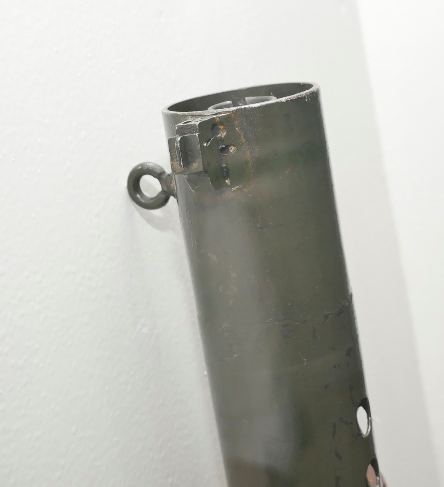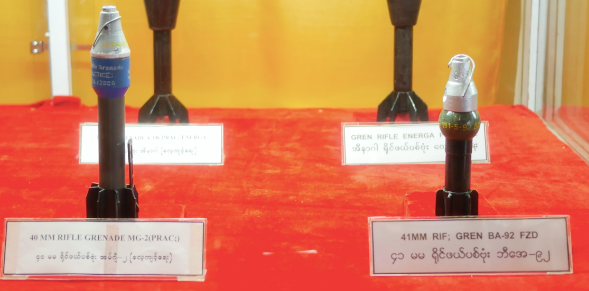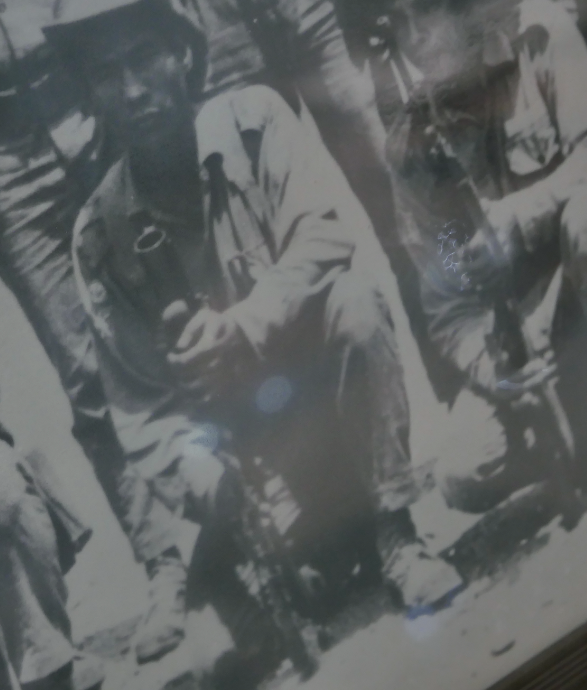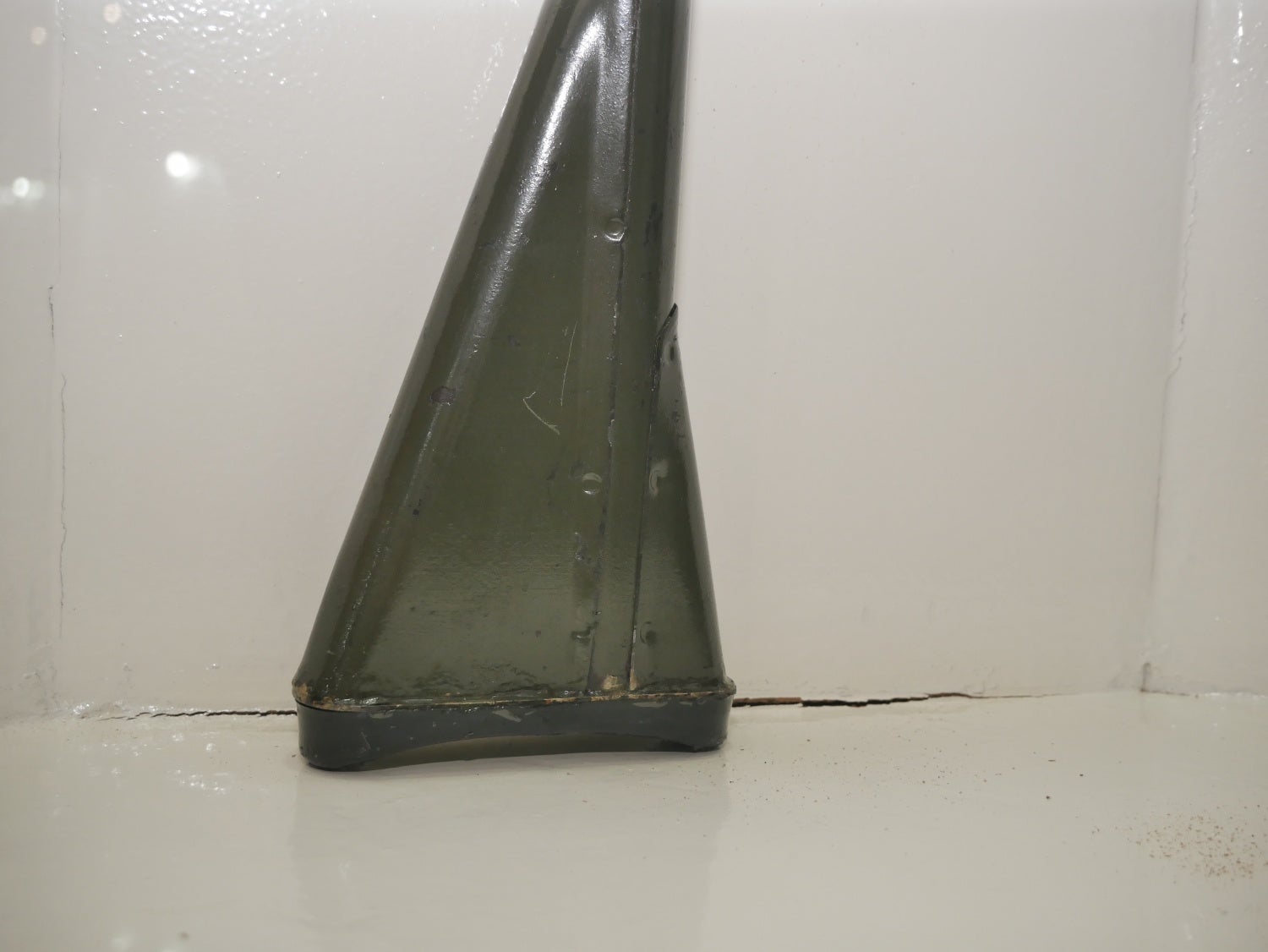The Burmese state-owned arms manufacturing wing Ka pa sa Industries (Defence Industries) has a long history of working within limited resources to meet the operational requirements of the Tatmadaw (Burmese Military). Operationally this has been seen in the cycle of retiring Tatmadaw small arms to national police forces where they often continue to see service, many years after they have become obsolete elsewhere. On the industrial and manufacturing side of the house, this has been seen through the lens of adapting surplus arms to outfit modern components or firearms themselves. This No.4 Lee Enfield that has been turned into a dedicated rifle grenade launcher is just such an example of that concept in practice. Today the launcher featured in this essay lies on display in the Defence Services Museum in the Burmese capital of Nay Pi Taw where any visitor to the museum can view it on display. Before we dive into describing the rifle grenade launcher we would like to extend a gratitude of thanks to the staff of the Defence Services Museum for allowing TFB to visit in an official capacity and research Burmese small arms.

Note that the sight actually isn’t a No.4 sight moved up, but might actually be a copy of one. Graduations appear to be in 100, 150, and 200-meter increments. Instead of a peep sight, there is a “U” notch cut into the two sides of the sliding bar. It also appears that the adjustment screw might be cracked in half towards the top. Source- Myanmar Defence Services Museum

Hook on the left is the front attachment for a sling swivel. The front sight is a No.4 dovetailed front sight. One can make out the muzzle of the .303 or 7.62mm barrel where rifle grenades are attached. Source- Myanmar Defence Services Museum
At the top of the case is the inscription “41mm BA-93, GRENADE LAUNCHER (MYANMAR)”. Currently, the Tatmadaw uses the designation of “MA” for Myanmar Army for the nomenclature of small arms and light weapons. But before this, models were labeled as “BA” for Burma Army. For the most part, the model numbers corresponded to the year they were adopted (BA63, 1963). Having the designation of BA-93 would put the adoption of the launcher around 1993 which actually ties in with a rifle grenade on display at the museum labeled as “BA-92”, preceding the year before the launcher’s adoption. The launcher consists of a Lee Enfield No.4 receiver where the stock has been cut several inches ahead of the chamber and the barrel several inches ahead of that. Affixed around the barrel is a tube that has been semi-perforated at the base. This tube appears to allow a bullet-trap concept rifle grenade to be affixed inside of it in preparation for firing. On top of the tube is a column where it appears the No. 4 flip up ladder sight has been inserted to align with a similarly affixed No.4 front dovetailed front sight post. There are no “ears” to protect it.
At the base of the receiver is a sheet metal tube contraption that has an extended check rest and support piece, also made from sheet metal. This particular version is painted green, but that isn’t to say that there are different finishes and colors out there. The fixed buttstock appears to be screwed into the rear of the receiver of the No.4 similar to how a standard two-piece Lee Enfield stock would be attached to it.

Note that the rear sight has been removed. Also, the “104” marking on the right side of the receiver above the magazine. Source- Myanmar Defence Services Museum
Just behind and below the receiver is the standard polymer pistol grip from the licensed produced G3 that came to have the designation of BA63 rifle, BA64 LMG, BA72 carbine, and BA100 marksman rifle. We actually see this pistol grip reappear on the currently fielded Defence Industries produced BA103 /MA-7 derivative of the RPG-7 recoilless rifle. The grip is screwed into a welded section attached to the main support strut of the buttstock.
Although we don’t know what rifle rounds are used in the launcher to propel the rifle grenade (either .303 or a rechambered/rebarreled one, most likely 7.62x51mm) it would appear that the rifle grenade used in the BA-93 could be the 41mm BA-92 that was on display in the munitions portion of the museum. Both items have designations within a year of each other and both have the same measurement of delivery munitions.

41mm rifle grenade round right, 40mm practice round on the left. It is doubtful that the practice round was for the BA-93, with the integrated flip up rear sight ladder. This might have been for one of the MA-series of rifles that were adopted in the early 2000s. Source- Myanmar Defence Services Museum
But was this actually fielded and used in combat? From what little sources we could access elsewhere, it was definitely used in frontline fighting. However, from what few historical sources are available about the Tatmadaw it couldn’t have been fielded in large numbers. We haven’t seen the BA-93 turn up public photographs of the ethnic groups (like you see with many captured Tatmadaw small arms), nor have we seen any surviving examples still in use. For the most part, this leads us to believe it was an extreme oddity that was produced on a factory line but wasn’t quite successful in combat for very long.

Although this photograph is from an early Tatmadaw period and the kneeling soldier appears to have a grenade launcher of some kind, it is most likely an American M79 standalone launcher, which was extremely popular in the ethnic civil war. Source- Myanmar Defence Services Museum
But of course, that doesn’t mean to say that rifle grenades weren’t successful in the fighting within Myanmar. Within the museum, there are multiple examples of rifle grenades designed for the BA63-series of infantry rifles, numerous M79s in use on both sides of the conflict. Today rifle grenades, UBGLs, and standalone launchers are very much favored by the ethnic groups and the Tatmadaw alike. Often this is even to the point of multiple variants of single designs that see use today.
 Your Privacy Choices
Your Privacy Choices

